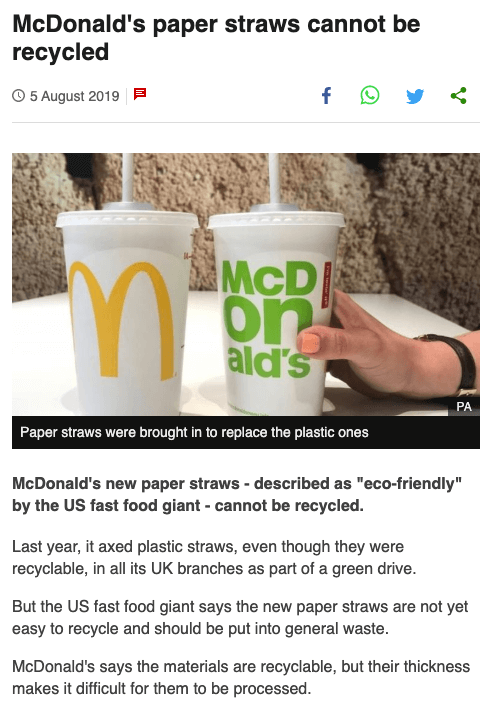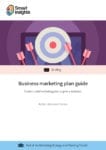Sustainable marketing is a great way to promote eco-friendly aspects of your company, as long as you get it right
It’s natural for a business to use all of its genetic makeup to promote itself and stand out in its market. For example, SMEs frequently use grassroots beginnings or a local focus to give them a unique tone of voice, while larger companies pride themselves on winning industry awards.
Another tactic that companies can adopt is sustainable marketing, which works as both a product and a brand marketing strategy. ‘Responsibility’ is becoming a common brand value and several companies have announced environmental and social initiatives that put the onus back onto the customer, challenging them to choose between the cheaper option and the (morally) ‘better’ option. However, it is essential to plan and execute sustainable marketing carefully or your brand can leave itself open to heavy scrutiny.
What is sustainable marketing?
Sustainable marketing is the promotion of environmental and socially responsible products, practices, and brand values. If you’ve ever spent a little bit more on something because you know it was locally sourced or 100% recyclable, you’ve experienced sustainable marketing.

Businesses can use sustainable marketing for a specific product, time-sensitive cause, or even as their businesses’ USP. LEGO is one company that has nailed sustainable marketing. Dedicating a section of their site to its sustainability programs, it is a brand that has a clearly-defined goal for its environmental efforts written in its tone of voice:
“Our mission is to make all LEGO® bricks sustainably by 2030. Why? Because being sustainable is good for the planet! We want to make bricks out of things that we can grow again or are recycled. This is not easy as we want sustainable LEGO bricks to have the same high quality that you are used to, but what we know is this: big ideas may start small, but they will help us build a greener planet one brick at a time.”
Generations of customers are still familiar with LEGO, as parents who grew up with the toy sets pass them down to their children and grandchildren. This means LEGO has the potential to ingrain a positive message about the importance of sustainability to a wide group of people around the world.
There are many examples of companies promoting programs, objectives, strategies, plans, and all manner of terminology about how they are becoming more sustainable. However, as we’ve seen when brands engage with Pride marketing, it isn’t as simple as hitching your products to a topical issue and then operating business as usual. You need to consider the context of the issue you are tapping into, how and why your brand fits as a solution in the mind of the customer, and (like all good plans) having defined goals so your progress can be measured and celebrated.
The key aspects of sustainable marketing are:
Your plan is long-term
Social and environmental issues are extremely large and need to be tackled on a larger time frame than seasonal promotions. The public knows that sudden change is almost impossible, so you need an objective that targets high-scale change over a large timeframe. Take the LEGO example mentioned earlier, its mission is to have production of its LEGO bricks be sustainable by 2030. This was announced at the end of 2018, meaning this is a 12-year plan.
Sustainable marketing is a great way to promote eco-friendly aspects of your company, as long as you get it right It’s natural for a business to use all of its genetic makeup to promote itself and stand out in its market. For example, SMEs frequently use grassroots beginnings or a local focus to giv
Does your company have the means to consistently maintain a sustainability program? When brands change their packaging to something 100% recyclable, they’re often taking a hit in production costs in the hopes that a sustainable message will raise sales and brand awareness. You may need to take a short-term loss to fully adopt your new practices and build towards long-term gain.
Your plan is consistent
You don’t just need a sustainable idea – you need to be specific. It is easy to tell your customers that one aspect of your brand is eco-friendly, but what about other elements? For example, imagine your brand sells a drink and you switch to new ingredients that are sustainably sourced. You may be tempted to shout about how responsible your brand is, but are the bottles you sell that drink in recyclable? What about the labels used on the bottle?
Such a problem was brought to light when McDonald’s replaced its plastic straws with paper ones. Due to the thickness of the new straws, the company said that they were not yet easily processed and recycled by the company’s waste solution providers, so they should be put in the general waste. The story soon broke in the press:

Even though the makers of the straws, Transcend Packaging, issued a statement clarifying that the straws themselves were recyclable, which story do you think received the most attention and discussion on social media?
If one aspect of your brand screams sustainability, but it isn’t supported by other elements of your service, you risk being taken to task for it. The instant communication allowed by social media between a brand and the general public means that any promises not being delivered on will be called out.
You deliver your plan responsibly
OVO Energy prides itself on winning Supplier of the Year from uSwitch, but its primary selling points are its supply of green energy solutions and its vision of a zero-carbon lifestyle.
Sustainable marketing is, therefore, a core part of the company’s strategy and aims to form a strong bond between the brand and the concept of renewable energy in the mind of customers. But how does OVO Energy get this message out to the public? Surely not through traditional marketing material wrapped in plastic and driven in smoke-spewing lorries across the country.

Announced in August 2019, the new company marketing strategy, as reported in Marketing Week “will see the company prioritise digital marketing and no longer use non-digital advertising in public places. Door drops are also being removed from its marketing strategy, while digital outdoor will be powered by renewable energy.”
The strategy is led by Sarah Booth who was recently appointed as Director of Brand and Marketing and attributes the strategy to the company’s marketing team seeing the need to ‘walk the walk’ when it comes to staying sustainable:
“We talk about the sustainability of our product but marketing itself, we all know, has a carbon footprint.”
Well said, Sarah!
Key takeaway
The essence of sustainable marketing is that you position your brand as an active figure in an environmental or societal issue. It can humanize your brand messages and create another reason why customers should choose you over your competition. But do not underestimate the commitment needed to participate in sustainable initiatives. These aren’t simple ‘buzzwords’ or ‘hot topics’ – they are programs dedicated to reducing carbon emissions, increasing recyclable materials, and improving prospects for the next generation. Is your brand is willing to put its money where its mouth is?

